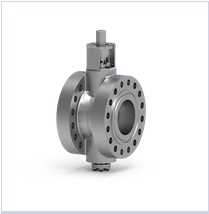Nov-2023
Reduce maintenance and calibration intervals with accurate instruments and analysis systems (ERTC 2023)
European refiners are grappling with complex challenges related to environmental regulations, changing market dynamics, and global competition.
Sophia Asal
Endress+Hauser
Viewed : 1244
Article Summary
To remain competitive and sustainable in the face of upcoming investment in emission-reducing technologies, plant uptime, efficiency, process safety, and cost optimisation have never been more important.
Introduction
The efficient operation of refineries involves an intricate set of processes and challenges: meeting stringent product quality standards and specifications to comply with regulations and customer expectations, securing a reliable and cost-effective source of feedstock, and managing energy consumption – to name just a few.
Moreover, the refining process itself is highly complex, and its various unit operations, like distillation, cracking, reforming, and blending, require continuous optimisation for efficiency and product quality: an ever-ongoing operational challenge. With high uptime and availability as well as safe and reliable operation being of utmost importance, downtime for maintenance is costly, so scheduling and executing maintenance activities efficiently is crucial.
The importance of accurate measurement
Reliable process measurement equipment is vital for the plant’s safe operation: it ensures product quality, safety, and operational efficiency by closely monitoring key variables like temperature, pressure, and composition.
Measurement devices help optimise processes, improve energy efficiency, and ensure compliance with environmental regulations. Additionally, they enable predictive maintenance, resource management, and data-driven decision-making, enhancing overall plant performance and cost-effectiveness.
To effectively address operational challenges and ensure optimal uptime, it is essential to collaborate with an experienced partner. The process measurement device manufacturer of your choice should have in-depth industrial know-how, a deep understanding of your process requirements, and a well-established global network of trained personnel.
Liquid analysis competence for Gas-to-Liquid plants
When it comes to gas-to-liquid (GTL) plants, the requirements to be considered are similar to those of traditional refineries but also comprise challenges related to the specific GTL conversion processes. Liquid analysis plays a pivotal role in GTL plants during and after the conversion of gases into liquid hydrocarbons.
This crucial process involves continuous monitoring and analysis of various liquid components and parameters to ensure the production of high-quality synthetic fuels and specialty chemicals by meticulously tracking product purity, composition, viscosity, and density. Moreover, liquid analysis sensors and instruments enable real-time monitoring of chemical reactions, aiding in reaction optimisation and catalyst management.
Detecting and quantifying impurities and contaminants, optimising process conditions, and maintaining environmental compliance are all key functions of liquid analysis. It also contributes to safety by promptly identifying hazardous conditions, and its data logging and automation integration features enhance operational control and decision-making.
Curbing maintenance intervals
For a major project in a GTL plant, Endress+Hauser was chosen to retrofit the existing large analyser base with Liquiline CM42 transmitters for accurate pH/ORP, conductivity, and dissolved oxygen measurement. The Liquiline CM42 transmitter is ideally suitable for demanding environments. Its intuitive operating concept simplifies commissioning, handling, and maintenance, saving operators time every day.
It allows for easy switching of parameters and seamless system integration to facilitate the flexibility to adapt it to the specific measuring task. Another project assignment was the development of a Maintenance Device Type Manager (DTM) covering system configuration, diagnostics, performance calculations, and calibration information in addition to the regular health check. The goal was to reduce calibration intervals significantly by installing reliable, robust components and enhancing process insights.
benefits of Device Type Managers
A DTM is a crucial software component in industrial automation and process control systems, facilitating the interaction with field devices using digital communication protocols like HART or FOUNDATION Fieldbus. DTMs serve as the interface between the control system software and field devices, enabling configuration, real-time monitoring, diagnostics, and asset management.
They allow engineers to set parameters, perform calibration, and retrieve diagnostic data while providing a user-friendly graphical interface for operators. DTMs are device-specific, ensuring compatibility, and often incorporate security features to safeguard against unauthorised access.
DTMs provide a centralised remote access point for horizontal and vertical data flow, allowing for a safer work environment by reducing the number of trips to the field and lowering start-up and commissioning costs. By streamlining device management and enhancing reliability, DTMs play a key role in optimising industrial processes.
Effective cost reduction
During the assessment and the DTM design phase, all involved parties worked together in close collaboration. Customer requirements for the DTM comprised, among others, the calculation and visualisation of key performance indicators, such as mean time before failure (MTBF), mean time to repair (MTTR), mean time between calibration (MTBC), and the resulting availability.
The Memosens 2.0 platform of digital sensors, in combination with the visualisation of the key performance parameters via the DTM, gives the operators full transparency and reliable, accurate process insights. By trending the calibration results of the Liquiline CM42 transmitters through visualisation by means of the DTM on the plant’s existing DCS system, a possible extension of the calibration intervals from four to eight weeks was feasible.
The Memosens 2.0 platform of digital sensors, in combination with the visualisation of the key performance parameters via the DTM, gives the operators full transparency and reliable, accurate process insights. By trending the calibration results of the Liquiline CM42 transmitters through visualisation by means of the DTM on the plant’s existing DCS system, a possible extension of the calibration intervals from four to eight weeks was feasible.
The benefits and value for the customer include the highest availability of installed Liquiline CM42 analysers, safe calculation of operational costs, clear and simple visualisation of key information for the operators in the PLC room, less time in the field and, therefore, more personnel safety, prolonged calibration intervals due to predictive maintenance functionalities with access to a history of adjustments, higher reliability of the measured values, and neat documentation. All in all, extending the calibration cycle by four weeks can reduce maintenance costs by 50% per year.
This short article originally appeared in the 2023 ERTC Newspaper, which you can VIEW HERE
Add your rating:
Current Rating: 4

















